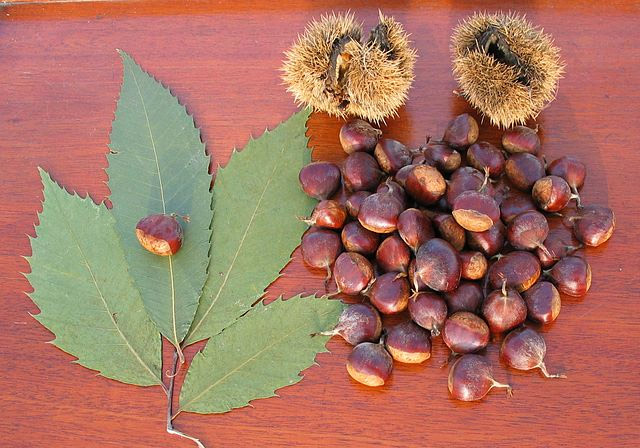What is agroforestry? At its very basic definition it’s the integration of trees and their products into agricultural practices. Not just leaving trees on the field perimeters, but integrating them into fields and pastures to compliment the row crops or grazing.
This is something that really appeals to me in the direction I’d like to take the farm. Adding nut and fruit trees could also add a nice income stream. Not to mention adding more biodiversity and beauty to the farm.
Last summer I added a few hazelnut whips here and there, mostly along the edges of the fields, but some in the semi-forested area across the road, at the edge of the marsh. Most grew very well, despite not being watered much. The tree tubes really helped protect them from the deer. If it turns out the deer liked them too much over the winter I’ll have to come up with some beefier protection, at least until they grow taller. Other than these few hazelnuts there hasn't been any other trees planted on the farm in the past couple years. I'll have to remedy that in the coming years!
Hybrid Chestnuts
Chestnuts are touted as a great nut species that produces copious amounts of nutritious nuts, for people and some livestock (particularly pigs). Chestnuts are talked about a lot in agroforestry applications. But the chestnut seeds and seedlings you can find on the market today aren’t the same trees as the American Chestnut of a century ago.
With the demise of the American Chestnut (Castanea dentate) during the first half of the 20th century by an accidentally introduced fungus, the prospects of growing these trees to maturity is very very slim. There are efforts to breed and select American Chestnuts that are naturally resistant to blight, but it could be many decades before success is achieved.
In the meantime there are hybrid chestnut varieties that are available to plant, which have significant crop potential. The production of hybrid chestnuts involves crossing Chinese chestnuts (Castanea millissima) and American chestnuts. It’s hard to get a number, but it looks like there are anywhere from 50 to 70 varieties of hybrid chestnuts that are available.
Multi-level Crops
Another hallmark of agroforestry is planting various tree species that mature at different heights. Generally fruit trees tend to be smaller, and nut trees larger and taller. Planted together they make a nice compliment to utilize vertical space. Taking into consideration vertical space is more important on smaller farms. If you don’t have the horizontal acreage to move out and about than going vertical with cropping space might be advantageous.
Planting various tree species next to each other would make it more difficult for fast and efficient harvesting of crops, but that’s really not a concern on our farm. Investing with large, and expensive, harvesters just isn’t in the budget. Harvesting of multiple tree species on the same few acres would mean more manual labor, or maybe creating a u-pick farm of some kind would be the best solution.
Integrated Grazing
If tree rows are spaced fairly far apart, say 100-200 feet or so, then utilizing the space between for grazing animals becomes a feasible option. Mixed grasses and clovers in this space not only makes great forage for grazers, but provides a healthy soil covering for the trees. In general tree roots don’t go down that far, so keeping a living layer of grasses at the surface will increase rain water retention and decrease runoff.
One thing to keep in mind if putting grazing animals out among your tree rows is fencing off small to medium sized trees from curious grazers. Even a 10 year old tree of most species hasn’t grown big enough to ‘fend for itself’ against determined grazers.
Letting grazers next to your tree plantings can help the animals to stay cooler in their shade, especially at mid day. A big help as our summers get hotter.
A Downside to Agroforestry
Even though there seems to be a LOT of great benefits to integrating trees into a farming operation, there is one downside, as I see it. If you have large machinery - big tractors, big harvesters, big semi trucks - then trees are a hindrance to working a field. Even if you were to plant the rows of trees at the width of a typical corn picker, plus a few feet of buffer on each side, it still would be difficult to handle that machinery when turning around at the ends of the rows. Considering I’ll probably never own a corn picker I really don’t have to take this into consideration.
Adding fruit and nut trees to your farm can have a lot of benefits, but if you’re working alone with big machinery then it’s probably not a feasible option for you. But putting a few nut trees along the field edges will benefit generations to come. That’s still an option.
Images
Sheep grazing in trees by Lamiot at Wikimedia Commons.
Chestnut leaves, seeds, burs by Preatcher at Wikimedia Commons.
Cows grazing by USDA via Wikimedia.

